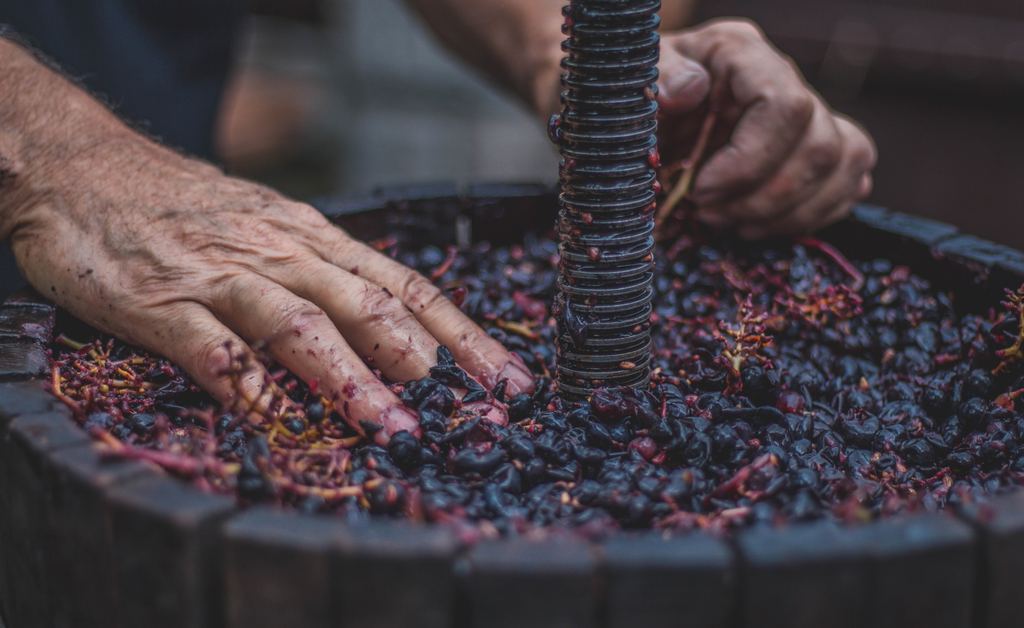By Rai Cornell
Wine is one of the most diverse products out there. Not only are there reds and whites (and rosés and sparkling varieties), but also each wine has a constellation of flavors and characteristics. Dry, sweet, full-bodied, light, and notes of just about anything you can imagine (apple and tobacco? Oh yes!).
One of the most influential characteristics of wine is the level of tannins. As you get to know your own wine profile, take special note of how your palate reacts to wines rich in or devoid of tannins.
Types
The term “tannin” refers to a type of molecule called polyphenol. Polyphenol is found in the skins and outer coatings of many different plants and foliage. For example, seeds, wood, tree bark, leaves, and fruit skins all contain tannins.
When it comes to tannins, wine picks them up from two main sources: the grapes and the wood of the wine barrels. While most people think tannins are only in the skins of grapes, they can also be found in the stem and the pip (the small seed-like vessel inside the grape).
During the production process, red wines are given more time to steep with all of the parts of the grape before being filtered. This is what gives red wines their deeper color and, in many cases (but not all!), greater astringency and complexity.
Different grapes produce more tannins than others, as well. Cabernet Sauvignon and Nebbiolo grapes are naturally high in tannins while Pinot Noir grapes often have lower tannin levels.
Time
Time is the biggest factor that affects a particular wine’s tannin level. During production, wines that are allowed to macerate (read: hang out) with their grape skins and stems longer will absorb more of the tannins into the liquid.
The time a wine is exposed to oxygen during production can also affect tannin flavors. While many producers keep their wines away from the outside air at all costs, some play with a technique called micro-oxygenation. This simply means the wine is exposed to oxygen in controlled environments and for very specific amounts of time, which breaks down the tannins and makes a young wine taste a bit more mature.
Next, wine is stored in barrels. Since the wood in these flavor-granting barrels also contains tannins, the amount of time your wine spends in the barrel affects how much of the wood’s tannins the wine is able to extract. As most white wines don’t spend much time with their grape skins and stems, tannic wines get their flavors from their barrels.
Many wine producers are strategic with how long they use certain barrels and when they retire them because the tannins in the wood are a finite source. Once they’re gone, they’re gone and this will affect each batch of wine differently.
Finally, once the wine is bottled, it begins the aging process. Over time, the tannins will begin to form long chains with one another on a molecular level. How this affects the flavor of your wine depends on how well balanced the tannins are in the bottle – more specifically, the balance between the tannins from the grapes needs to be well-balanced with the tannins from the wine barrels.
A well-balanced wine will get smoother over time while a not-so-well-balanced wine won’t change much at all or may even become more astringent. However, a wine doesn’t need tannins to age well. Many white wines low in tannins age deliciously.
Taste
A common misconception is that you can taste tannins. Not true. As you’re sipping your wine, tannins will affect the way a wine feels on your tongue and how your tongue and salivary glands react. This is why you’ll often read about or hear tannins referred to as soft, firm, silky, harsh, or even chewy.
If anything has ever made you pucker, it likely contains tannins. Common high-tannin culprits are dark chocolate, pomegranates, acai berries, and quince fruit. Tannins are what give some wines an astringent or bitter quality. They also add complexity to wines and can vary depending on the source.
However, tannins aren’t always pucker-inducing. Most people say they feel tannins on the center of their tongues, the sides, and just inside the lips. As you’re enjoying your next glass, pay attention to these parts of your mouth and describe what you feel.
Source:https://www.getvinebox.com/blogs/learn/what-are-tannins-and-how-do-they-affect-aging


